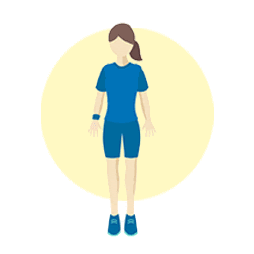Hit ENTER to search or ESC to close



There are few exercises types that aid the body post-stroke or traumatic brain injuries (TBI) quite like yoga and tai chi.
Aside from being a great way to keep fit, mind-body exercises like yoga and tai chi are increasingly being used to help people with brain injuries improve their physical and mental health. So how do these exercises aid someone during the recovery process?

One of the core principles behind mind-body exercises is to improve free motion throughout your body – an idea that’s extremely beneficial for anyone re-learning movements.
By practising and re-learning basic movements, these exercises help re-connect the mind and body by promoting neuroplasticity – which is the process of reforming damaged connections. This helps to slowly improve their muscle strength as they recover.
Studies have shown that yoga and tai chi improve cognitive performance, such as memory, attention and the ability to carry out daily activities. Additionally, patients saw an improvement in their physical health with reduced pain and fatigue and better motor functions such as balance and mobility.
It’s not just the physical body that benefits either as these exercises have been found to improve the mood, mental health and sleep quality of recovering patients. This allows them to be more motivated and engaged in rehabilitation programmes, enhancing recovery.
It’s this view that allows mind-body exercises to give an improved quality of life and enhance the recovery process.
Even some of the most basic stretches and poses can yield some of the best results. Here are some movements you can consider practising:
While Seated Upright:


While Standing:


Poses and positions like these can help mimic everyday movements such as sitting and getting out of bed. Focusing on your breathing as you go also allows the mind to stay calm and increases mindfulness of your surroundings and the core task at hand.

Like any physical exercise, it is best to speak to both doctors and therapists to see whether yoga or tai chi are suitable add-ons to a standard rehabilitation programme.
Once given the all-clear, these exercises can become a viable practice and help take a slow, methodical step to reform bonds between the mind and body.
Stroke Exercises Guide eBook
Get detailed information on stroke recovery exercises for different parts of the body with various intensities and customisations to suit your needs.

Give Feedback
Let us know if you found this useful and what topics you would like to see in the future so that we can provide more relevant content for you.
References:
1. Acabchuk, R. L., et al. (2021). Therapeutic Effects of Meditation, Yoga, and Mindfulness-Based Interventions for Chronic Symptoms of Mild Traumatic Brain Injury: A Systematic Review and Meta-Analysis. Applied psychology. Health and well-being, 13(1), 34–62. https://doi.org/10.1111/aphw.
2. American Stroke Foundation. (2021).
3. Flint Rehab. (2021).
4. Lazaridou, A., et al. (2013). Yoga and mindfulness as therapeutic interventions for stroke rehabilitation: a systematic review. Evidence-based complementary and alternative medicine: eCAM, 2013, 357108. https://doi.org/10.1155/2013/
5. Love, M. F., et al. (2019). Mind-Body Interventions, Psychological Stressors, and Quality of Life in Stroke Survivors. Stroke, 50(2), 434–440. https://doi.org/10.1161/
6. Lyu, D., et al. (2018). Tai Chi for Stroke Rehabilitation: A Systematic Review and Meta-Analysis of Randomized Controlled Trials. Frontiers in physiology, 9, 983. https://doi.org/10.3389/fphys.
7. Timesnownews. (2020).
8. Zou, L., et al. (2018). Effects of Mind⁻Body Movements on Balance Function in Stroke Survivors: A Meta-Analysis of Randomized Controlled Trials. International journal of environmental research and public health, 15(6), 1292. https://doi.org/10.3390/
Website: Moleac.com
Contact: info@moleac.com
This document does not constitute the practice of medical consultation nor medical advice. Always seek the advice of your treating physician and/or specialist.
All Rights Reserved by Moleac Pte Ltd, Helios #09-08, 11 Biopolis Way, Singapore 138667